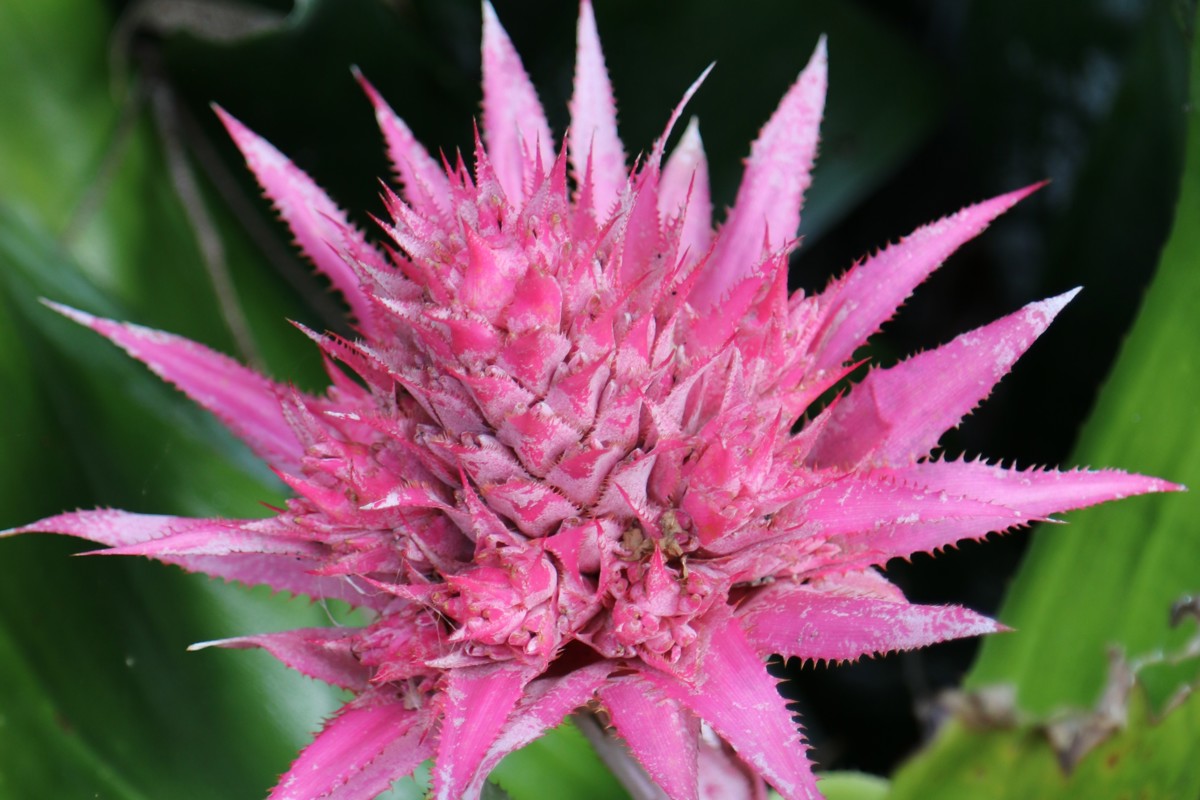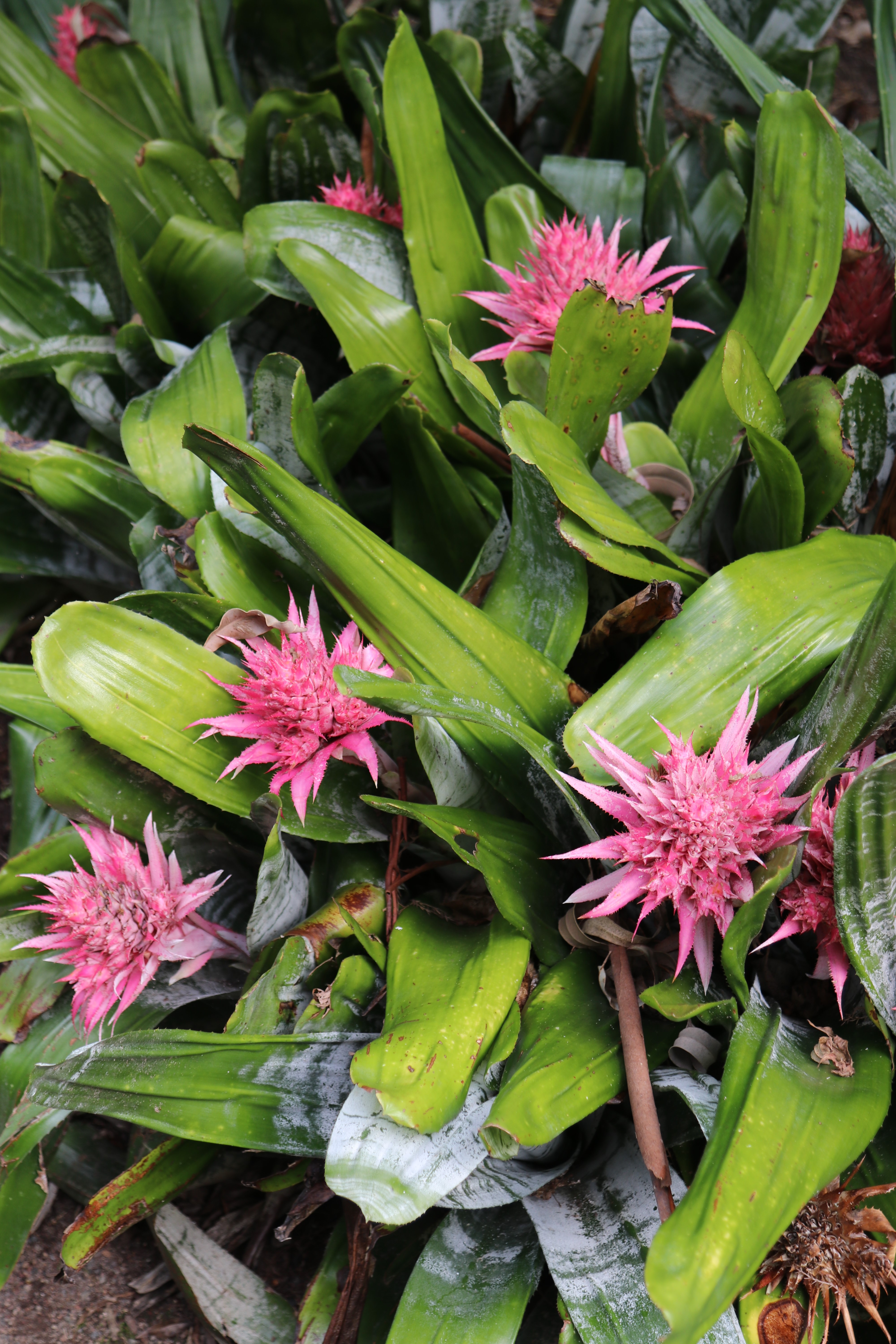Physical characteristics
An
Flowers and foliage
Wide strap-like arching grey leaves with silver bands grow in large rosettes to make an urn shape. From the centre, a dense pyramidal spike of
Preferred site
Best planted in free-draining soil in light shade to
Maintenance tips
For container-grown
Ecological and biodiversity benefits
Provides a habitat for invertabrates
Pests and diseases
These
Companion and combination plants
Other bromeliads and tropical-looking
Location at Auckland Botanic Gardens
Palm Garden




.jpg?width=1200&height=1200&v=1d4024dceb89e50)

.jpg?width=1200&height=1200&v=1d5569224d63650)
 .jpg?width=1200&height=1200&v=1d4024df6ce2770)
.jpg?width=1200&height=1200&v=1d55676a892f2b0)
 .jpg?width=1200&height=1200&v=1d4024e3b65f7f0)